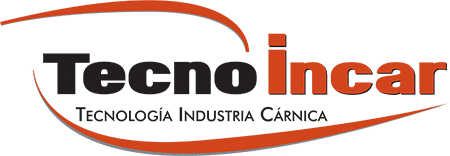The Slaughter Line: A Key System in Meat Processing
The slaughter line is the set of interconnected processes that transform a live animal into a meat product ready for commercialization. It comprises various workstations—from stunning and bleeding to scalding, evisceration, cutting, and sanitary inspection—all synchronized to ensure a continuous and controlled flow.
In modern slaughterhouses, this line is usually automated and supported by overhead rail systems, conveyor belts, and specialized machinery that must be kept in optimal condition. A failure at any point affects the entire production line, so maintenance is not optional—it’s a critical need for proper system functioning.
Why is Slaughter Line Maintenance Essential?
The slaughter line operates under extreme conditions: humidity, organic residues, variable temperatures, and intense production shifts. In this environment, wear and tear are inevitable. That’s why a maintenance plan is not just advisable—it’s absolutely essential to ensure the system runs safely, hygienically, and efficiently.
A well-executed maintenance plan allows you to:
Prevent Unexpected Downtime
Every minute of downtime in a slaughterhouse represents a direct loss.
A failure in a key component—such as the overhead rail, stunning box, or evisceration equipment—can halt the entire line. Preventive maintenance minimizes that risk.
Ensure Hygiene and Food Safety
The accumulation of residues in critical areas—hooks, trolleys, or conveyor belts—not only compromises cleanliness but can endanger product quality and lead to sanitary penalties. Regular cleaning and disinfection are inseparable parts of maintenance.
Extend Machinery Lifespan
Inspecting, lubricating, and replacing worn parts in time extends the life of your equipment and avoids early replacement costs. Investing in maintenance means saving in the medium and long term.
Improve Efficiency and Reduce Energy Consumption
Well-calibrated and lubricated equipment runs with less effort, consumes less energy, and delivers more stable performance. The difference between a fine-tuned machine and a neglected one shows up on the electricity bill—and in the results.
Comply with Legal Regulations
Both health and occupational safety regulations require facilities to be in proper working condition. Documented and regular maintenance is your best defense during inspections or external audits.
Recommended Types of Maintenance in the Slaughter Line
A good maintenance plan is never improvised. It should be structured, scheduled, and tailored to the workflow of each facility. In a slaughter line—where automation, moving elements, and components with high bacterial load coexist—a combined strategy of three maintenance types is essential:
Preventive Maintenance
The key is anticipation.
It is performed on a scheduled basis, even if there are no apparent failures. Tasks include deep cleaning, adjustment of moving parts, component lubrication, replacement of worn elements, and verification of electrical or pneumatic parameters.
Advantages:
- Minimizes unexpected downtime
- Extends machinery lifespan
- Improves safety and hygiene
Corrective Maintenance
Immediate reaction to a breakdown.
This involves repairing or replacing a failed component. While it shouldn’t be the core strategy, it’s inevitable in certain scenarios.
Consequences:
- Higher emergency costs
- Risk of a full-line stoppage
- Potential product and production losses
Predictive Maintenance
Technology in control.
Based on continuous monitoring of equipment conditions using sensors, software, or specialized technical inspections. It allows you to detect anomalies before they become real failures.
Common applications:
- Conveyor belt motors
- Pneumatic systems for platforms
- Traction and lifting components
📽️ Follow us on our YouTube channel to see our technology in action.

